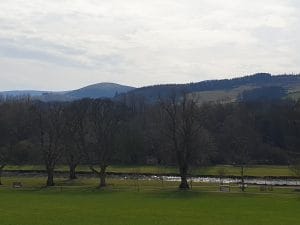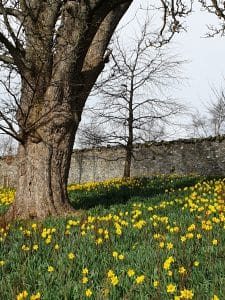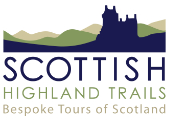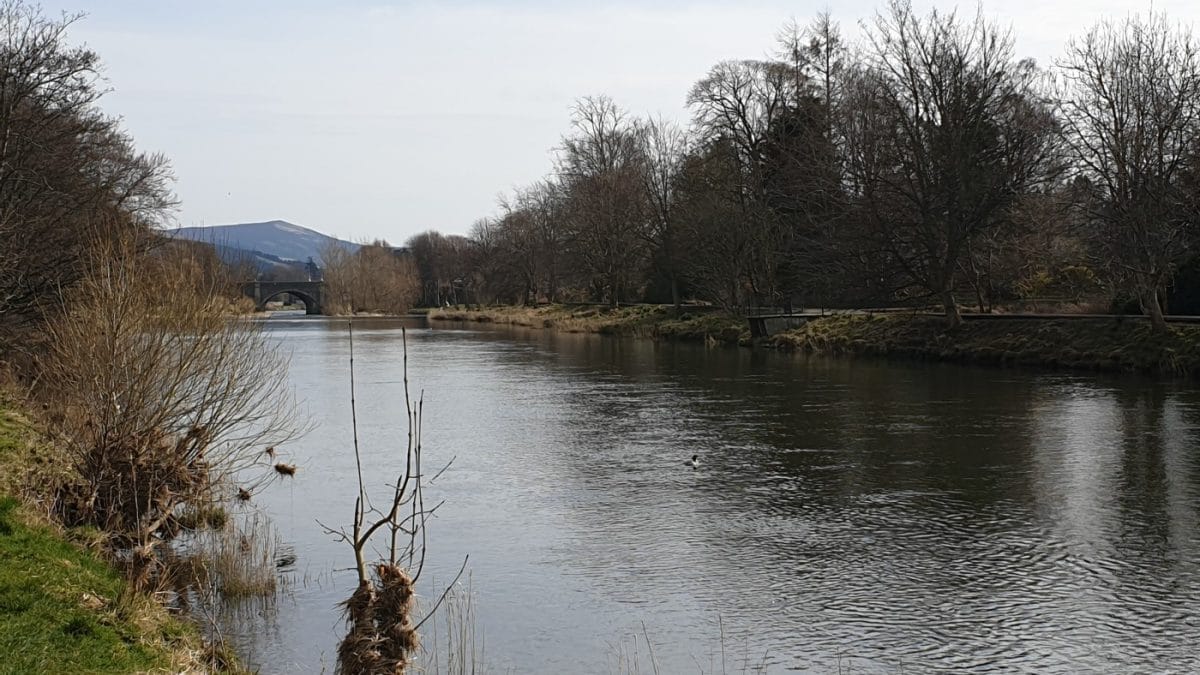
A stroll closer to home today for my four legged friend! We walked to Haylodge Park, five minutes from our house and a beautiful green space with the River Tweed running through it. I have been coming to this park my whole life, and spent many happy times here as a child: playing in the river, sledging in wintertime, walking the family dogs… and now my own children love it too.
It’s been a public park for about 100 years, but from the late 14th century the land here was the possession of the church. It remained so until the Reformation of 1560. After the Reformation the land was sold off, initially to the town council and later to private individuals. It changed hands several times and in the early 19th century it was purchased by a Glasgow merchant named Alexander Campbell.
The Campbells were a hugely wealthy family who had made their fortune in the West Indies. At the end of the 18th century Glasgow was an important hub for transatlantic trade. Glasgow’s location on the River Clyde, Scotland’s only major river to flow west, facilitated direct access to the Atlantic, and with the advent of ships which could travel across the ocean to the Caribbean in a matter of weeks, Glasgow merchants were quick to take advantage. The city’s merchants monopolised the trade in plantation grown produce such as tobacco and sugar, all of which was produced by enslaved people. By 1790, the combined worth of imports and exports between Glasgow and the West Indies was in the region of £50 million in today’s money, and Scots owned a third of the plantations in Jamaica.
Alexander Campbell of Hay Lodge was part of a vast family firm, founded by his uncle John Campbell. They became major players in the Caribbean, owning over a dozen sugar plantations in Grenada and Demerara, Guyana. They became enormously wealthy in the process and this catapulted the family into the upper echelons of society. As befitting their newfound status, several family members bought land and built fashionable country retreats in Peeblesshire: Alexander Campbell’s father owned land at Hundleshope, his uncle owned Hallyards at Manor, and his cousin Robert Nutter Campbell owned Kailzie (the grand house he built at Kailzie was demolished in 1958. However you can visit his beautiful walled garden and enjoy a scone in what was his stable block, now used as the tearoom, at Kailzie Gardens). Alexander bought the land at Hay Lodge in 1822 with the profits of a sugar plantation in Grenada which he inherited on the death of his father.

Alexander built the stone wall on the Neidpath Road which encloses the present day park, and for a while the wall was known as “Campbell’s Dyke”. However the fortunes of the Campbell family were soon to change. The abolition of slavery eventually brought an end to the family’s profitable endeavours in the Caribbean, and Alexander’s heirs sold the land in the 1840s. It was in private ownership until 1919 when the land was purchased by the town council and it has been a public park ever since.

The legacy of the slave trade and the role Scottish merchants played in the West Indies poses some uncomfortable questions for Scots. A walk through the centre of Glasgow demonstrates exactly what slave labour made possible in Scotland – there is a whole area known as the Merchant City, today home to fashionable bars and restaurants, with impressive architecture and wide, imposing streets – the majority of which are named after 18th century tobacco lords and sugar merchants. Many of the beautiful Georgian buildings of the New Town of Edinburgh were built on the profits of plantation owners. Sir Henry Raeburn, Scotland’s most significant artist, painted many of these men (including Robert Nutter Campbell of Kailzie) and their portraits hang in our national galleries. How much of our country’s present day wealth is ultimately derived from historical human trafficking? The University of Glasgow benefited from tens of millions of pounds in today’s money, thanks to gifts and bequests made in the 18th and 19th centuries by people who had profited directly from the slave trade. Last year the university became the first institution in the UK to establish a “restorative justice programme” which plans to raise and spend £20 million in reparations. This will include a centre for research and study of the history of slavery in collaboration with the University of the West Indies. However, it is also interesting to note that in the 18th century the university was at the forefront of the abolition movement in Scotland and awarded an honorary degree to William Wilberforce, the leading abolitionist, in 1791 – long before the Abolition of the Slave Trade Act of 1807. As contradictory as this may seem, the real impact of Scotland’s colonial legacy has been ignored for too long, and the university’s acknowledgement of the source of much of its wealth is an important step in redressing the balance.
Related posts
Whoops! No connected account found. Try connecting an account first.


